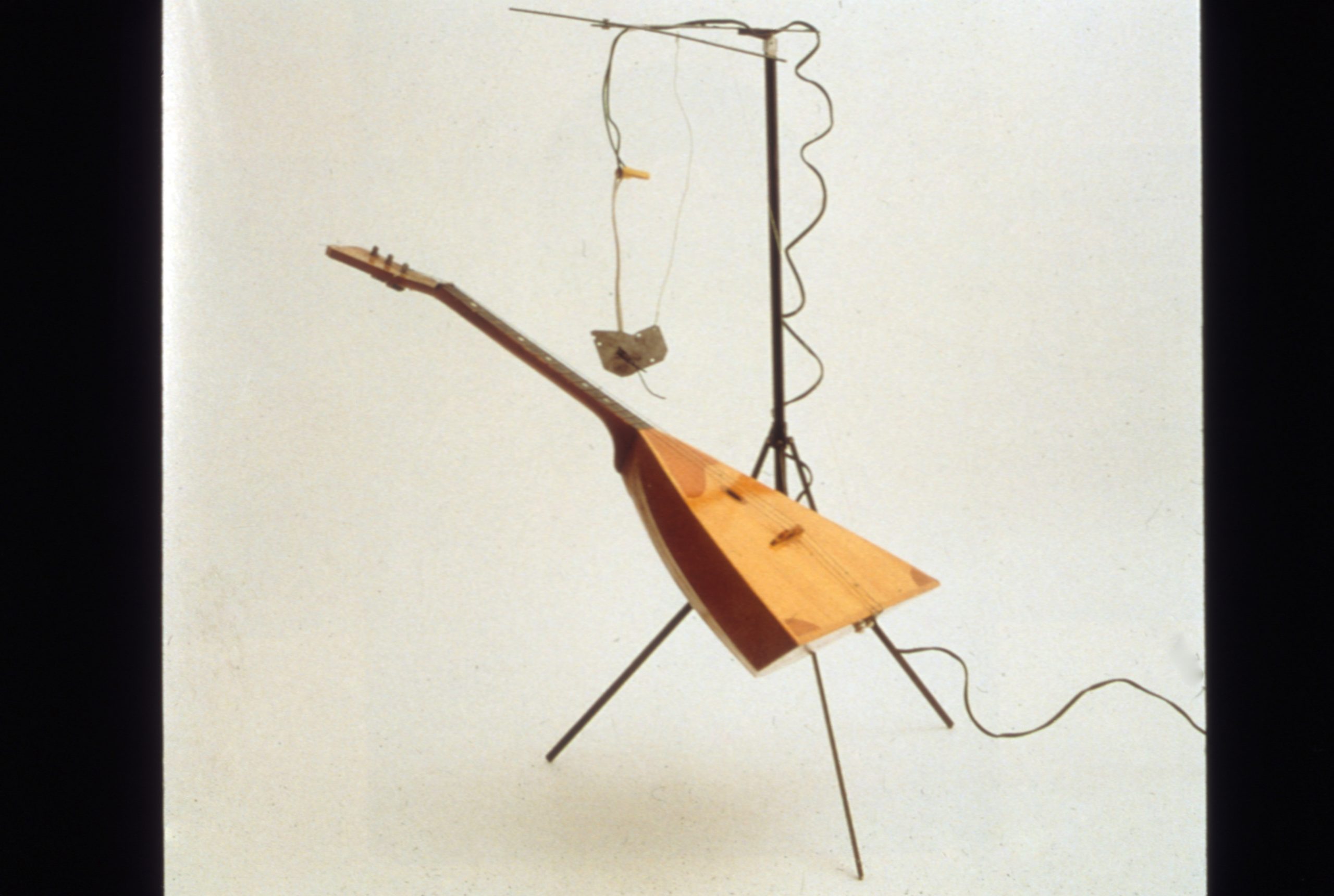Art & Art History
Between Sound and Vision

Gallery 400
400 South Peoria Street, Chicago, IL 60607
Curated by Jeremy Boyle, Nathaniel Braddock, Dasha Dekleva, Kristina Dziedzic, Hannah Higgins, and Laila Korn with contributions from the Sound and Vision seminar at the University of Illinois at Chicago, Between Sound and Vision features an international array of artists, composers, and musicians from Indonesia, Japan, Denmark, Germany, the Netherlands, Canada, and the United States whose work emphasizes an interplay between aural and visual sensory perception. The exhibit ’s roots belong to the extended circle of composers, performance artists, visual artists, and poets associated with experimental composer John Cage. In 1969, Cage edited the seminal book Notations (Something Else Press), the first collection ever of graphic scores by over 150 artists. Differing from traditional notations that posit specific notes onto staves within measured tempos, these compositions employ visual elements to convey suggestions for musical sounds.
Since the 1970s, the hand-painted, penciled, printed, and collaged scores were tucked away in the Northwestern University Music Library, where they were rarely seen and almost never heard. Remarkable not only for their visual impact, these pieces also demonstrate the inextricable connection between seeing and hearing, and usher the viewer/listener into an interstitial space between music and visual art. The exhibition includes a selection of those original “Notations,” in addition to the recorded audio interpretations of them and the contemporary performative and interactive sculptural and installation works.
Contemporary works that exemplify Cage ’s legacy range from recent graphic notations by Philip Corner, David Dunn, Dick Higgins, and Yasunao Tone to the sculptural instruments of Jeremy Boyle, Heri Dono, Joe Jones, Alison Knowles, Minoru Sato (m/s), Charlotte Moorman, Carolee Schneemann, Dan Senn, William Stone, Trimpin, and Yoshi Wada to installations by Phill Niblock, Paul Panhuysen, Achim Wollscheid, and Brandon LaBelle. Jack Ox extends the principle of visual sound translation, and poetry by Kenneth Goldsmith in collaboration with Joan La Barbara provides an extraordinary intertextual experience. Finally, Hildegard Westerkamp ’s sound recordings of ambient noise expands on Cage ’s famous 4 ’ 33” and brings the exhibit full circle to its origin. Between Sound and Vision engages its audience in a uniquely conjoined act of listening and seeing, and creates space(s) for truly interactive experiences.
A compact disc catalogue, which includes interpretations of graphic scores never before recorded, accompanies the lectures, special concerts, website, and community outreach programs associated with this exhibition. The opening reception includes performances by Cube, Eric Andersen, Alison Knowles, Paul Panhuysen, and others.
OPENING FESTIVAL PERFORMANCES:
Eric Anderson with UIC students
OPUS 2001
Jeremy Boyle, Nathaniel Braddock, Jerome Bryerton, Guillermo Gregorio, Brent Gutzeit, Fred Lonberg-Holm, Todd Margasak, and Scott Rosenberg
Audience-directed composition-improvisation performance
CUBE: Janice Misurell Mitchell (flute, voice), Patricia Morehead (oboe, English horn), John Johnson (percussion), Philip Morehead (synthesizer)
Selected scores from Notations
Alison Knowles with Jeremy Boyle and Ron Fong
Onion Skin Song
Paul Panhuysen
Long string performance